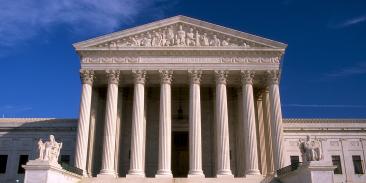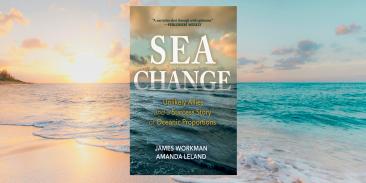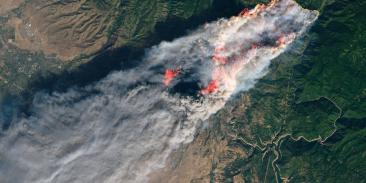Court Rules New York Must Implement State Climate Law and Deliver Swift Action
ALBANY, N.Y. — Today, the Albany County Supreme Court issued a decision in a case brought against New York State for delaying regulations under the State’s landmark 2019 Climate Leadership and Community Protection Act (CLCPA or “Climate Act”). The decision grants a petition brought by Citizen Action of New York, PUSH Buffalo, Sierra Club, and WE ACT for Environmental Justice and finds that New York’s Department of Environmental Conservation (DEC) violated the law by failing to promulgate regulations that ensure compliance with the state’s emissions limits by the statutory deadline of January 1, 2024.
Environmental Defense Fund, with partners Riverkeeper and Save the Sound, submitted an amicus — or "friend of the court” — brief in support of petitioners claims. That brief made clear DEC had failed to promulgate rules to ensure compliance with statutory emissions targets by demonstrating that existing regulations were insufficient to meet the Climate Act’s emissions requirements. The brief also argued that DEC had violated the Climate Act by failing to prioritize measures to maximize reductions of emissions and co-pollutants in disadvantaged communities.
The Court’s decision today requires DEC to promulgate regulations to ensure compliance with the Climate Act’s requirements no later than February 6, 2026.
“The Albany County Supreme Court’s decision confirms that New York’s Climate Act requires the swift adoption of standards that ensure the state achieves its climate pollution limits,” said Erin Murphy, Director & Sr. Attorney, Clean Air & Energy Markets at Environmental Defense Fund. “Strong standards that reduce climate pollution to the levels required by law will deliver cleaner air, lower energy bills, and more resilient communities across New York State.”
Fortunately, New York does not have to start from scratch. State agencies have been working since 2023 to develop cap-and-invest regulations, now known as the Clean Air Initiative, specifically to fulfill the requirements under the CLCPA. In addition to slashing climate-warming pollution, the Clean Air Initiative is projected to generate more than $3 billion annually for investments that can save New Yorkers money on energy bills, create family-sustaining jobs and deliver massive health benefits, particularly in communities most impacted by climate and air pollution.
“The Clean Air Initiative, New York’s cap-and-invest program, is the best tool available to deliver pollution cuts that support a healthy future in line with the Climate Act’s requirements,” said Kate Courtin, Senior Manager, State Climate Policy & Strategy at EDF. “New York can establish a strong program that will clean our air, lower our bills, and generate new economic opportunities across the state. The New York legislature passed nation-leading requirements for tackling climate change and protecting our communities from pollution; the Hochul administration has an opportunity to deliver on that leadership promise.”
In addition to being a cost-effective, flexible and proven approach to cutting climate pollution, research released by state agencies as well as a growing body of independent studies confirm the affordability, job growth, and health benefits of the Clean Air Initiative, including:
- Over $3 billion per year of new investments in New York families and communities. This includes over $1 billion annually in direct rebates to consumers and small businesses to reduce energy costs.
- With targeted rebate investments, nearly all households earning under $200,000-per-year see net cost savings under cap-and-invest.
- Savings of up to $1,000 per year on energy bills for the average family, through deployment of new clean energy technologies and efficiency programs, such as robust heat pump incentives.
- Supporting the creation of over 28,000 jobs by 2030, representing continued growth of New York’s clean energy workforce, which already employs 178,000 New Yorkers.
- Significant investments in community-directed grant programs that drive local economic development, cleaner air and affordability in disadvantaged communities.
- Preventing an estimated 1,800 asthma-related ER visits annually and delivering $7–16 billion in annual health savings through reduced air pollution.
With more than 3 million members, Environmental Defense Fund creates transformational solutions to the most serious environmental problems. To do so, EDF links science, economics, law, and innovative private-sector partnerships to turn solutions into action. edf.org
Latest press releases
-
Trump Administration Announces Unlawful Offshore Wind Halt
December 22, 2025 -
Governor Hochul Repeals "100-Foot Rule," Accelerating New York's Clean Energy Future
December 19, 2025 -
Colorado Air Regulators Approve Landfill Methane Standards
December 18, 2025 -
Proposal Would Guarantee Public Access to Air Quality Data
December 18, 2025 -
New Bill Will Help Keep Domestic Manufacturers Competitive
December 17, 2025 -
Satellite Data Shows Colorado Oil & Gas Methane Emissions Dropped as State Rules Took Effect
December 17, 2025











